Статьи журнала - Arctic and North
Все статьи: 955
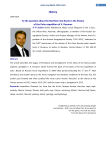
To the question about the Northern Sea Route in the history of the Polar expedition of V. Rusanov
Статья научная
The article describes the stages of formation and development of the ideas of the famous polar explorer, geologist V. A. Rusanov, which formed the basis of the plans of his last expedition in 1912. Based on Russian Arctic expeditions in 1909−1915 period (including the 1st and 2nd New Zemlians), and modern data on the Arctic navigation and weather conditions of the Kara Sea, the author puts forward and often justified the route cutter version ‛Hercules’ to the shores of the Taimyr autumn of 1912, winter 1912−1913 and the return trip to navigation in 1913.
Бесплатно
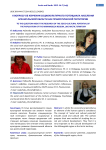
Статья научная
In article the sociocultural potential as an element of the human capital is considered. The concept of ‘social and cultural potential’ includes social and cultural side. The authors propose their own method of studying the social and cultural development. They find it is very important to the cultural development of the Arkhangelsk region as the Arctic territory.
Бесплатно

Top officials of the Russian Arctic: "Vorkuta is my home town. Life in the Arctic has tempered me"
Статья научная
Under the "Top officials of the Russian Arctic" project, Evgeny Shumeyko talks about the positive changes in his hometown Vorkuta, where he was born, worked as a miner, and now he is the leader of the Town administration. Official membership in the Russian Arctic zone gives a new status for Vorkuta and means its further development. In these circumstances, the urban economy should be brought into the light of reality, to optimize the infrastructure in order to have chances for the further development. «Strategy of socio-‐economic development of the urban districts 2014» defined the role of Vorkuta as a being a strategic outpost of Arctic exploration in the European North of Russia.
Бесплатно
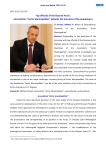
Статья научная
Responding to the questions of the interview with top officials of the Russian Arctic, Michael Gmyrin focused on the mission and objectives of the Association “Arctic Municipalities”. Severodvinsk municipality was among the founders of the Association in December 2014. Its creation would help the integration of municipalities and contribute to the sustainable socio-‐economic development of the Arctic territories. Severodvinsk has positive experience of making social projects. Improvement of the quality of life and living conditions of northerners is one of the major challenges currently facing all Arctic Municipalities. The work of the Association "Arctic Municipalities" may be of the main activities of the State Commission on Arctic chaired by O. D. Rogozin.
Бесплатно

Top officials of the Russian Arctic: «Now I understand that we have passed the razor's edge»
Статья научная
The article represents one of the interviews with top officials of the Russian Arctic. Oleg Kurilov, head of Norilsk City administration, shares his management experience in the field of creation of the comfortable urban environment in the extreme conditions of the North, talks about his professional achievements. In accordance with the Presidential Decree "On the land territory of the Arctic zone of the Russian Federation" dated May 2, 2014 № 296 Norilsk is considered as a part of the Russian Arctic. Kurilov O.G. believes that the most important task for him is providing the citizens with decent living conditions, the certain level of comfort and quality of life the people of Norilsk have already accustomed to.
Бесплатно
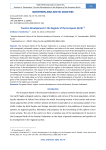
Tourism Development in the Regions of the European North
Статья научная
The European North of the Russian Federation is a unique northern (Arctic) tourist destination with ecologically vulnerable system, original traditions and culture of the locals, attracting Russian and international tourists. The aim of the work is to form a comprehensive view of the development of tourism in the European North of the Russian Federation based on identifying general trends and specifics of its development in the regional context. The model platform is six constituent regions of the European North of the Russian Federation (the Republics of Karelia and Komi, Arkhangelsk, Vologda and Murmansk oblasts, as well as the Nenets Autonomous Okrug). The research is based on investigation of seven main blocks: tourist and recreational potential and its promotion in the Internet; development of tourist infrastructure; strategies of the tourism development; dynamics of tourist flows (domestic and organized international); economic factor in the development of domestic tourism; regions in the National Tourism Rating; factors hindering tourism development. The impact of the COVID-19 pandemic on the development of tourism in the European North is presented. The study is based on open statistical data from Rosstat, the official website of the National Tourism Rating for the period 2016-2020. The median indicators are calculated in the work. The results of the study allow us to form a general idea of the development of tourism in the Russian regions of the European North. The specific characteristics and general trends of the regional development of tourism in the regions are revealed.
Бесплатно
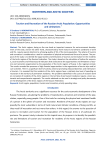
Tourism and Recreation of the Russian Arctic Population: Opportunities and Limitations
Статья научная
The Arctic regions, being on the one hand an important resource for socio-economic development of the state, and on the other hand, characterized by harsh natural and climatic conditions of work and life, require special attention to achieving quality of life of the local population. The sphere of tourism and recreation is considered as a tool for restoration of physical and emotional forces of a person. The purpose of the study is to identify the opportunities and limitations of tourism and recreation for the residents of the Arctic regions of the Russian Federation. The study is based on the calculation of indices for economic, socio-economic and infrastructural indicators that characterize the opportunities and limitations of tourism and recreation organization by the population of the Arctic regions of Russia in the regional context. The results revealed the presence of high financial opportunities in the organization of tourist trips and leisure activities. There is a significant level of activity aimed at promoting inbound domestic and international tourism. It is revealed that the residents of the Arctic regions have a relatively low level of spending on recreation in the territory of permanent residence. The problems identified in the course of research work on recreation of residents of the Arctic regions in the territory of permanent residence require a more systematic and comprehensive approach. The results obtained can be used in strategic and policy documents on the development of the Arctic regions of the Russian Federation.
Бесплатно
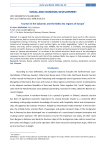
Tourism in the Subarctic and the Baltic Sea regions of Europe
Статья научная
It is argued that the cultural dimensions of the Arctic and Subarctic have much to offer contemporary tourism, both as sources of new contents in tours and as an important field in tourism research and management training. In Norway, the Euroarctic is marketed to tourists focusing on nature and wildlife. A limited set of branding elements is used: northern lights, ice hotels, dogsledding, “safaris” for watching: whales, rare birds, and for catching king crabs. Wildlife, like the weather, is unreliable, and disappointed tourists are bad for business, so cultural contents have in practice proved necessary to bring into guide narratives as “backup entertainment” on no-shows of the natural attraction. Much more of the ethnological and historic heritage of the Euroarctic has potential interest to regional tourism development. This article compares tourism in the Euroarctic with that of the southeast Baltic Sea region, to find examples of what this could be and makes some recommendations based on that.
Бесплатно
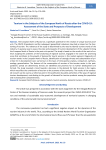
Статья научная
The European North of Russia has a significant potential for the creation of unique tourism products. The COVID-19 pandemic and the subsequent geopolitical turbulence have had an impact on the functioning of tourism. The relevance of the study is determined by the need to identify current trends of the industry. Its purpose was to assess the state and prospects of tourism development of the subjects forming the European North of Russia in the post-crisis period. The study is based on the results of the work of authors studying the problems of the functioning of regional tourism, engaged in the search for promising areas that contribute to the growth of demand for tourist services in this market segment. Diagnostics of tourism trends in the European North of Russia, identification of strategic threats and substantiation of priorities for its development were carried out on the basis of retrospective analysis, comparison, synthesis, analogy, generalization. The features of the consumption of services of the tourism sector in the post-pandemic period are determined, threats are identified and priorities for its further development are formed. The study revealed a trend towards a decrease in the demand for hotel services in the region, which may affect the contribution of tourism to the economy of the territories. The results of the conducted research can be used as a reference point in the justification by public authorities of the ways of regional tourism development, contributing to the growth of demand for tourism products among the population and increasing their competitiveness.
Бесплатно
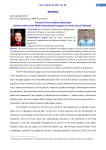
Статья научная
The article presents the summary of the Ninth International Congress of Arctic Social Sciences. The authors focus on the key issues of tourism development in the Arctic and Subarctic regions, such as sustainability, involvement of local people and climate change. The conference reveals how research in the field of tourism is based on multidisciplinary approaches combining economics, sociology, history and meteorology. Another part of this review is dedicated to the definitions and nature of ecotourism, its development and history in the national parks of Finland and the Republic of Karelia. National parks Koli and Paanajärvi were taken as case studies of ecotourism development.
Бесплатно
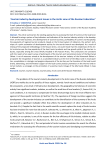
Tourism industry development issues in the Arctic zone of the Russian Federation
Статья научная
The article summarizes the existing approaches to assessing the level of tourism at the local level. It allowed forming a system of key indicators and indicators of the tourism industry activity in the development of the hotel business; the development of tourism business; profitability of tourism and hospitality; the popularity of regional tourism products. Based on the formed system of indicators, the author's technique of a point estimation of development activity for the tourist branch was developed. As a result of testing of the proposed methodology in the Russian Arctic, we could reveal that the weaknesses of the Arctic territories was the low popularity of the local tourist products and low growth yield of the tourism industry, especially among the areas wholly included in the Russian Arctic. The conclusions are consistent with the results of an expert survey of participants of the tourism and recreational cluster of the Murmansk Oblast. A set of measures aimed at the development of the tourism industry of the Murmansk Oblast is proposed: the recognition of tourism as a subsidized industry at the level of the Oblast and its municipalities; consolidation in strategic and program documents of the territory on the formation of the local tourist brand, advertising, and information support of the local tourist product promotion on the internal and external markets; a campaign on the promotion of a positive tourist image of the Murmansk Oblast in mass media.
Бесплатно
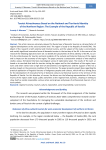
Статья научная
This article raises an extremely relevant for Russia topic of domestic tourism as a driving factor of regional development at the socio-economic level. The region of study is the Republic of Karelia (RK). The object of the research is both external and internal tourists, and the subject of the study is economically and socially significant innovative forms of domestic tourism in the territory of the RK. In the course of the research the following objectives were set: to identify the peculiarities of ethnic identity of the RK, to confirm the attractiveness for tourists and local residents of the cultural and historical features of the region and its impact on the economy of the region. The paper presents a comparative analysis of two empirical studies using a formalized interview (sociological survey of exploratory type). The results of the work allowed us to conclude that both for tourists visiting the region and for the inhabitants of the region, toponyms and other names have a high level of attractiveness and significance and the support of this has a positive impact on the economic condition of the territories. The paper presents project ideas regarding the practical application of linguistic features of indigenous peoples and cultures, which will be a driving force for the development of innovative forms of domestic cultural and historical tourism in the territory of the Republic of Karelia. For this direction, of course, the drivers are the following representatives of the community of the region under study: public authorities at the regional level; business, showing or wishing to show itself as socially responsible; various active social groups and groups of professionals; bearers of cultural symbols.
Бесплатно
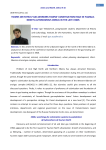
Статья научная
In this article the formation of the urbanized region of the north of the West Siberia is analyzed on the basis of the conference materials on urban development in the gasbearing are-as of the Tyumen region in 1968.
Бесплатно

Traces of the Russian Language in the Arctic
Статья научная
This article is devoted to the Arctic as the territory of an ancient developed civilization existence; the territory that gave the world the Russian language, which later spread throughout the world; the territory where archaeological and anthropological artifacts have been preserved, allowing us to speak about the primacy of the Aryan (Russian) people, and, consequently, about the primacy of the ancient language of the Aryans. The authors of the article give the examples of excavations, the names of toponyms, hydronyms, ornaments on clothes, vessels, household items, proving the life of people in the Russian North many thousands of years before the Sumerian, Persian, Indian, Egyptian, Chinese civilizations; represent the opinion of scientists from around the world; try to find “traces” of the Russian language in other languages of the world. The authors of the article made a comparative analysis and demonstrated the interconnection of several languages on the example of some words, presented information on the Russian alphabet and showed its connection to the English signs of transcription. The hypothesis about the primacy of the Russian language is based on the statements of well-known domestic and foreign linguists, dialectologists, ethnographers, historians, slavists, sanskritologists, paleontologists, paleoclimatologists, soil scientists, and other researchers and requires further study.
Бесплатно
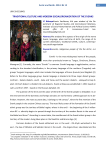
Traditional culture and modern social organization of the evenks
Статья научная
We analyzed the aspects of the origin of the name Evenk, language, place and time of birth, the range of its current distribution, traditional beliefs, culture, contemporary social organization.
Бесплатно
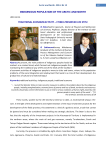
Traditional economic activity – ethno-preserved life style
Статья научная
At present, the main problem of indigenous people should be marked as a created trend, which formed out indigenious people from maintaining the traditional way of life and of the kinds of the traditional economic activities of indigenous people to move to cities and towns, where in this population problems of the social integration and employment that leads to a crisis of their development, the gradual loss of cultural and national begun.
Бесплатно
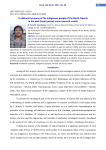
Статья научная
Archival documents and sociological field materials lead to some study results on the development of the traditional economy on the Arctic and North territories of Yakutia in the post-Soviet period — 1990s–2000s. The author considered the following issues: environmental and economic zoning, the historical discourse of the traditional economy in the context of agrarian policy in 1990s and some theoretical approaches to studying the phenomenon of the traditional way of life and the economy of the indigenous peoples of the North. In the first post-Soviet decade, we see a gradual decrease in the number of the northern livestock. The most vulnerable were the northwestern coastal areas with predominant reindeer herding. Sociological data on the second post-Soviet decade enabled us to identify three directions in the preliminary typology of the traditional economy of the indigenous peoples of the North Yakutia.
Бесплатно
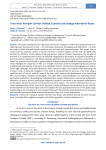
Trans-Arctic Transport Corridor: Political, Economic and Strategic Potential for Russia
Статья научная
The study is devoted to the large-scale Trans-Arctic Transport Corridor (TATC) project aimed at integrating major Russian port centers — St. Petersburg, Murmansk, Arkhangelsk and Vladivostok — in order to create a unified transport system combining sea, rail, road and inland waterways. This project aims to connect the key economic centers of Eurasia and form a seamless logistics corridor that can significantly increase the efficiency of international trade and enhance national transport sovereignty. The purpose of the work is to comprehensively assess the historical background of the project, its economic feasibility, as well as its political, diplomatic, and military-strategic significance for Russia and its partners along the Arctic route. The research uses methods of system analysis, in-depth historical review and expert assessment. The results highlight the uniqueness of TATC as a strategic instrument aimed at strengthening Russia’s position in global trade and security. At the same time, significant climatic, infrastructural, hydrographic and international legal challenges have been identified, which should be taken into account when developing the transport route. In particular, navigation in the Arctic is complicated by the presence of ice cover along a significant part of the sea route for most of the year, which requires the development of an icebreaking fleet and innovative navigation technologies. The paper offers recommendations for improving interdepartmental coordination, developing the icebreaking fleet and port infrastructure, overcoming hydrographic difficulties, as well as actively involving the indigenous peoples of the North in the economic development of the region, taking into account environmental and social aspects. The authors emphasize that the successful implementation of the Trans-Arctic Transport Corridor will become the foundation for the sustainable development of the Arctic region and will strengthen Russia’s geopolitical influence on the global stage, contributing to the formation of a new transport framework that provides unhindered access to the oceans and improves international trade relations with partners from Asia, Europe and America.
Бесплатно
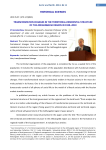
Статья научная
The article represents the results of a research of transformational changes that have occurred in the territorialresidential structure in the rural areas of the Arkhangelsk region in the period between censuses, 1939−2010.
Бесплатно
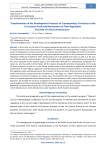
Статья научная
In this article, on the basis of conceptual approaches derived from research in the field of theories of spatial economy and infrastructure, the problems of naturally occurring significant changes in the processes of development of natural-economic formations formed in the geostrategic territories of the North-Arctic part of the Far East, representing at the same time the eastern part of the Arctic zone of the Russian Federation (AZRF) are considered. Their transboundary role in the global Arctic basin, as well as at the junction of Russia with the state of Alaska, USA, in the Pacific Arctic, also requires intensification of research in this area, especially at the present stage of the well-known difficulties in international cooperation between our country and the United States. All this requires focusing the attention of specialists on the study of these processes, as well as on the closely related issues of the necessity to adjust the methods and mechanisms of state-regional regulation of the development of these economic entities. In the near future, the regulatory tools used should ensure the transition of these territories from the micro-level of primary, mainly raw material, spatial-economic formations to a new stage, to a higher meso-level of industrial development of economic complexes. As studies show, this transition will occur on the basis of advanced creation of a system-organized critical infrastructure, its main elements, which, due to their new spatial configuration, will provide the necessary conditions for this transition and give the opportunity to maximize the use of exogenous factors and emergent effects of the development of economic entities.
Бесплатно

